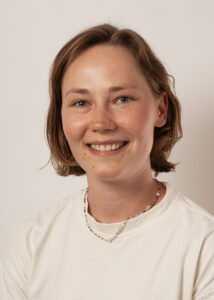Meet the poster prizes winners of the EMBL Conference ‘AI in one health’
Organised every three years by EMBL’s International Relations team, the EMBL Partnership Conference brings together the expertise of all EMBL partners around a common topic of interest, fostering new ideas and collaborative scientific projects. Each edition has a distinct theme, and the 2025 ‘AI in one health’ conference focused on the impact of recent advances in artificial intelligence (AI) on health-related life science fields, including molecular medicine and precision health, genetics and genomics, as well as technology and imaging.
For the 2025 edition, we welcomed 210 on-site participants who could join networking activities for young investigators, workshops for group leaders and senior researchers, and an engaging career panel. A total of 73 posters were presented in two poster sessions, where participants shared their research and voted for three poster award winners. We are pleased to share the research of all three winners!
Scalable generation of single-cell genomes from complex microbiomes
Presenter: Iryna Yakovenko
Authors: Iryna Yakovenko, Jyoti Verma, Hadrien Gourle, Julian Dicken, Florian Albrecht, Johan Normark, Nicklas Strömberg, Tommy Löfstedt, Laura Carroll, Johan Henriksson

Abstract:
Single-cell metagenomics is revolutionizing microbiome research by resolving isolate-level genomes and addressing the limits of metagenome-assembled genomes (MAGs). However, current methods for single-cell genome sequencing face challenges such as low throughput, high costs, and protocols focused on transcriptomics or reference-based analyses. We present a new approach that uses semi-permeable capsules (SPCs) to enable scalable generation of single-amplified genomes (SAGs) from complex microbial communities. Unlike previous split-pool single-cell methods, SPCs do not require precise permeabilization. Instead, they allow enzymes and oligonucleotides to diffuse across the membrane while keeping genomic DNA intact. Our scMetaG method facilitates the preparation of tens of thousands of genomes in a single reaction, significantly increasing throughput and reducing costs. To process this unprecedented volume of data, we further developed a highly scalable computational pipeline, which integrates with existing bioinformatic software for single-cell analysis. Using our pipeline, we can cluster cells by similarity and resolve near-complete, single-cell genomes from heterogeneous samples. Our methods provide a robust, scalable framework for dissecting microbial communities at single-cell resolution, opening new frontiers in microbial ecology, evolution, and functional genomics
Effects of DNA adducts on nanopore sequencing
Presenter: Yrjö Koski
Authors: Yrjö Koski, Divyesh Patel, Lauri Aaltonen, Biswajyoti Sahu, Kimmo Palin, Esa Pitkänen

Abstract:
Covalently bound DNA adducts can induce mutations which can lead to cancer. The commonly used adduct detection methods typically focus on only a few types of adducts and lack accuracy in pinpointing the genomic locations of adducts. Long-read nanopore sequencing can be leveraged to accurately detect multiple types of DNA adducts at a single-nucleotide precision. In this study, we treated Whole Genome Amplified DNA with four adduct-inducing genotoxic compounds: aristolochic acid, melphalan, mitomycin C, and cisplatin. We then investigated how these DNA adducts can be detected with nanopore sequencing and observed changes in base quality scores, ionic current, and read interruptions when compared against untreated control samples. Melphalan and aristolochic acid treatment increased the number of interrupted reads while mitomycin C yielded lower quality scores in CG-rich motifs. This study shows that nanopore sequencing can be applied to detect and characterize DNA adducts by identifying specific changes in sequencing output metrics that are characteristic to each type of adduct.
De novo protein design for neuroscience: homology and specificity
Presenter: Ida Kjærsgaard Grene
Authors: Ida Kjærsgaard Grene, Magnus Kjaergaard

Abstract:
Neurotrophins and their receptors are crucial to nervous system development and in maintaining its function and plasticity. One group of neurotrophin receptors are the Vacuolar protein sorting 10 protein (VPS10P) related receptors. The mammalian protein family comprises Sortilin, SorLA and SorCS1-3. The SorCS receptors have approx. 40% sequence identity and even though only SorCS2 has a published, high-resolution structure they are expected to adopt very similar folds. These receptors act as coreceptors to the primary neurotrophin and proneurotrophin receptors and participate in their trafficking and signalling. Genetic variants found in the genes of these receptors have been linked to several neuropsychiatric disorders such as autism spectrum disorder and Alzheimer’s disease. In this work we design novel protein binders of these receptors using artificial intelligence tools for de novo protein design including RFdiffusion, ProteinMPNN, AlphaFold and BindCraft. The aim is to develop a set of orthogonal binders to VPS10P receptors that bind with high affinity both in vitro and in a more physiologically relevant cell culture setup. This set of proteins will be valuable tools for understanding both the capabilities of de novo design tools and the many functions of these receptors. It will enable us to study their interactions and how they relate to downstream signalling by blocking native interactions with exogenously added binders.
The 5th EMBL Partnership Conference ‘AI in one health’ took place from 31 March – 2 April 2025 at EMBL Heidelberg Advanced Training Centre.